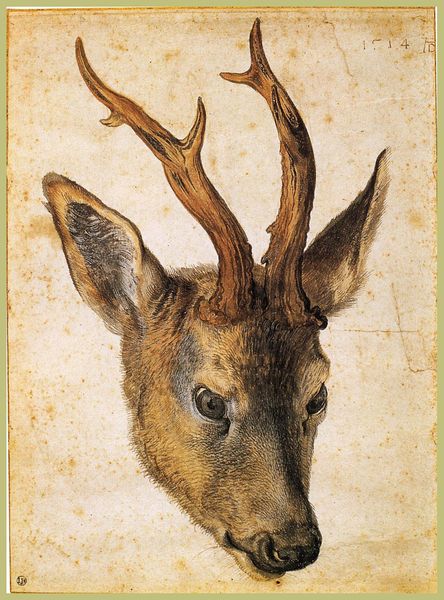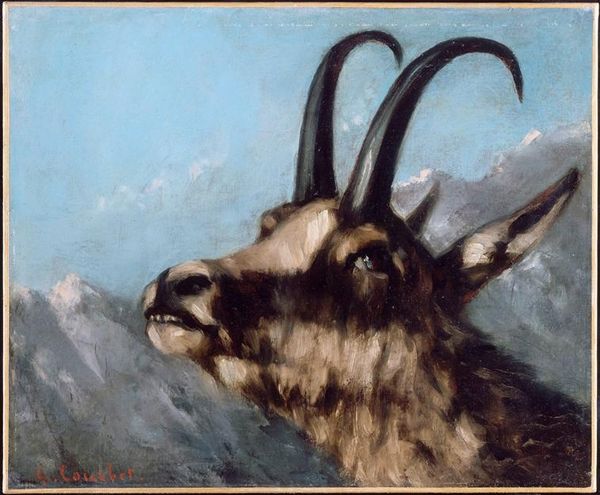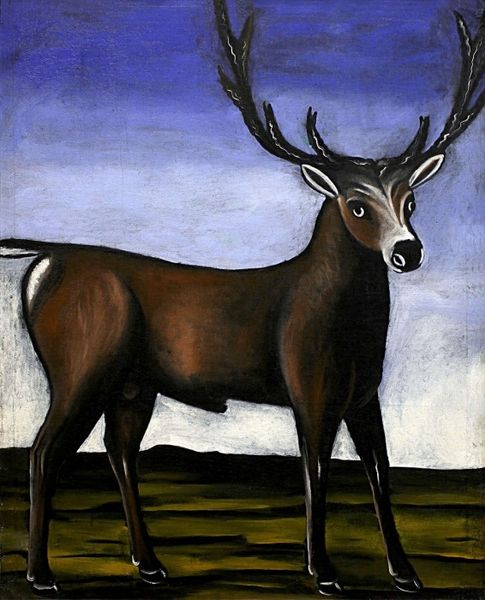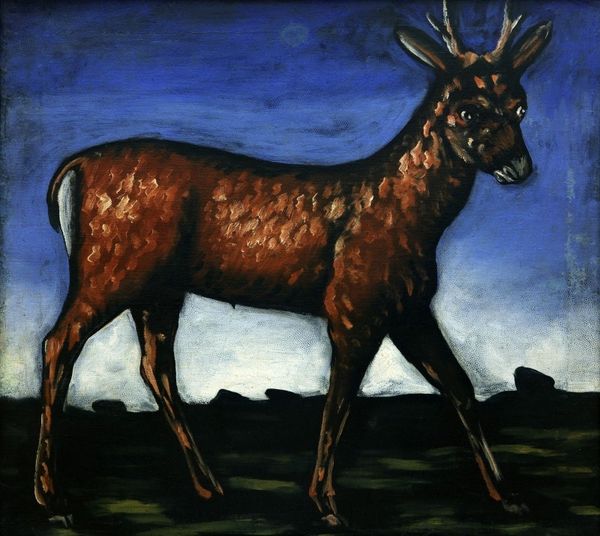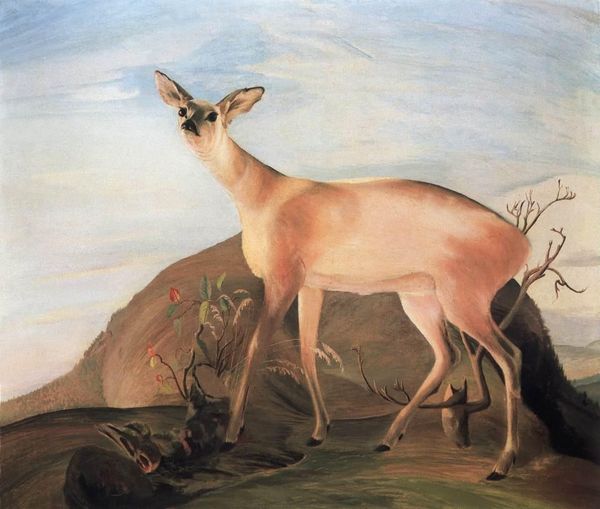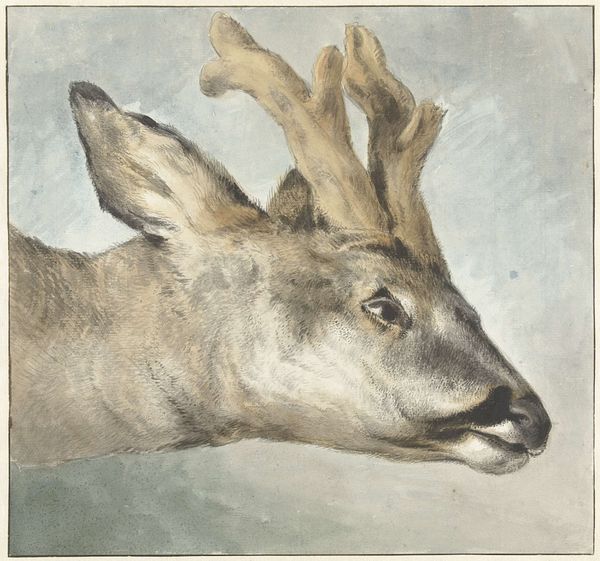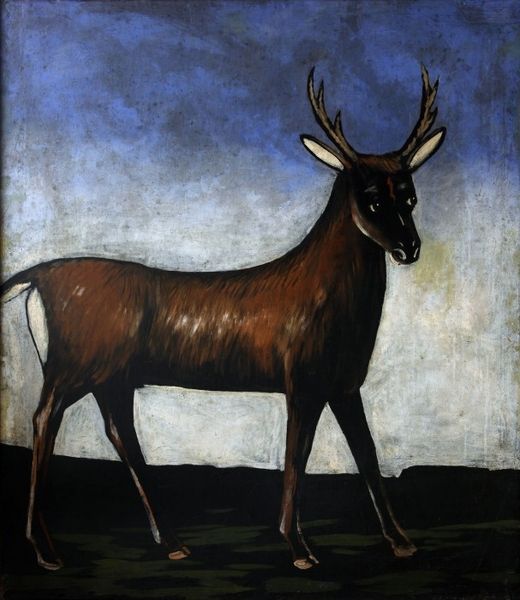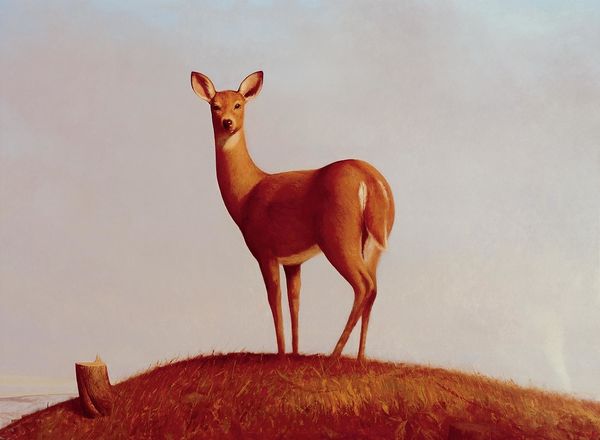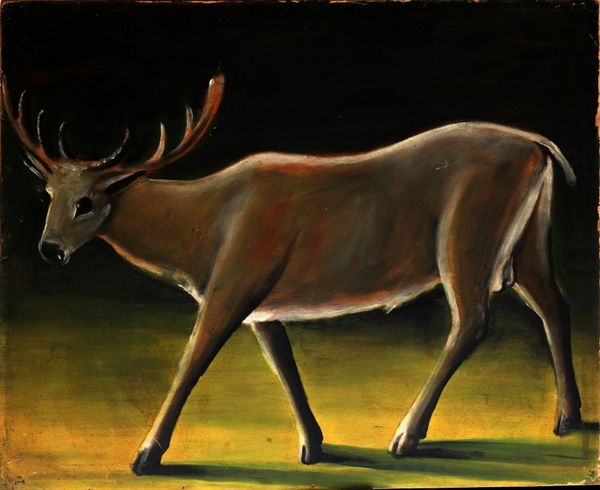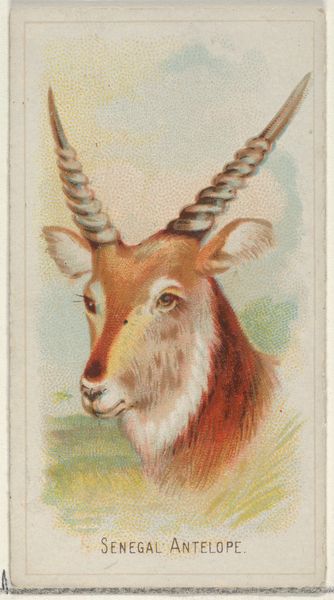
painting, oil-paint
#
portrait
#
baroque
#
animal
#
painting
#
oil-paint
#
charcoal drawing
#
oil painting
#
realism
Dimensions: 52.5 x 66.5 cm
Copyright: Public domain
Editor: Here we have Diego Velázquez's "Head of a Stag," painted in 1634. The use of oil on canvas gives it a certain softness, almost like you could reach out and touch the animal’s fur. There’s something very arresting about the gaze. How do you interpret this work? Curator: It’s crucial to situate this piece within its historical and political context. Velázquez, a court painter, wasn’t simply depicting a stag; he was engaging with complex issues of power, class, and the environment. The royal hunts, frequent at the time, weren’t just sport, but theatrical displays of dominance. This Stag can be viewed through the lens of social and political spectacle. How does it challenge our assumptions about the natural world being separate from human activity and the constructs of monarchy? Editor: That makes me see the painting in a new light. I initially saw it as a very straightforward animal portrait, but your reading really emphasizes the undercurrent of power. Do you think the Stag itself becomes a symbol in that reading? Curator: Absolutely. Think about it: the stag, in its natural habitat, represents untamed wilderness. By placing its ‘head’—a trophy, really—within the controlled space of a painting, and a royal collection no less, Velázquez is commenting on humanity's desire to control nature. Is this work celebrating the hunt, or subtly critiquing the aristocratic excesses of the era? Perhaps, in its gaze, we see the hunted becoming the haunter. Editor: So, it's not just a stag, it’s a loaded symbol of domination and environmental control… it's incredible how much more you see when you consider these different perspectives! Curator: Exactly. Considering intersectional historical contexts unlocks these additional narratives that help us appreciate the work on multiple levels. Hopefully, you will share these insights to the public through your writings.
Comments
No comments
Be the first to comment and join the conversation on the ultimate creative platform.
